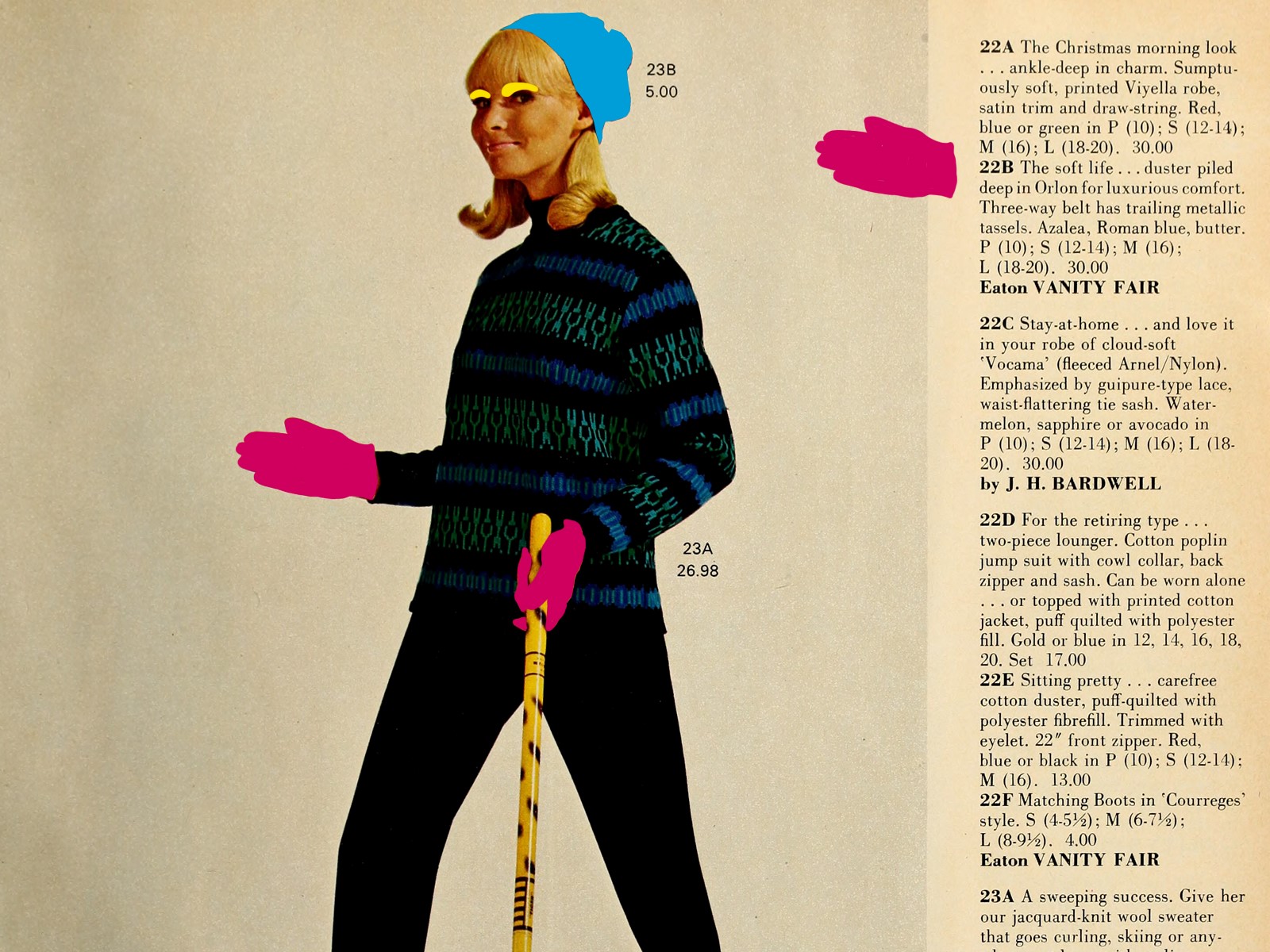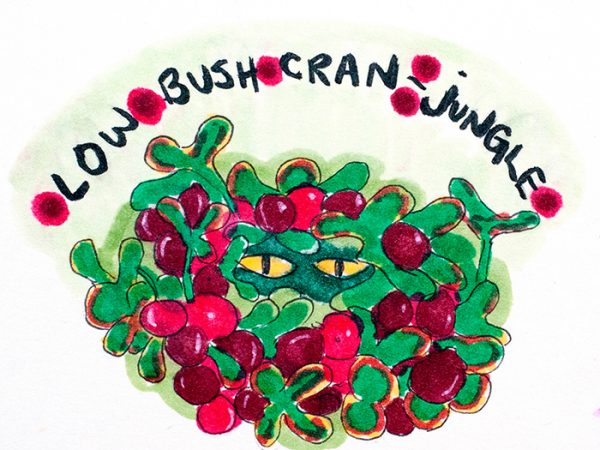Before going outside to play, dress warmly in the “Canadian” style with elegant French Regime era leggings, bonnets and jackets [1]1Cap-aux-Diamants
S’habiller à la canadienne
1991. Or, dress as “the people of the North”, with a choice of international fibers – “English and Shetland woolens and Finnish cashmeres and duvets” – dictated by “our taste for fashion and renown” [2]2Cap-aux-Diamants
S’emmitoufler comme les gens du nord
1991.
You are now ready and willing to embrace the snow and ice. But what will you play?
Winter Sport
Will you go snowshoeing like the soldiers of New France [3]3
Achimac ou la raquette pour marcher sur la neige et Nouvelle-France
1962?
Will you take advantage of the snow that global warming has given us to go skiing [4]4Cahiers de géographie du Québec
The Impact of CO2 – Induced Warming on Downhill Skiing in the Laurentians
1987?
Will you be adventurous enough to try ice fishing and to eat your catch [5]5Mémoire pour la maîtrise en ressources renouvelables, Université de Chicoutimi
Étude toxicologique sur la consommation de poisson de pêche blanche sur le fjord du Saguenay
2004?
Will you frantically sweep the ice to slide a granite stone and continue a long Canadian tradition? The first Canadian curling club was founded in Montreal in 1807 and many authors argue that the establishment of curling in its modern form—it was probably imported from Scotland—“constitutes one of the most important contributions of Canada to world sport” [6]6International Journal of Canadian Studies
Curling in Canada: From Gathering Place to International Spectacle
2007. This sport may, however, leave francophones indifferent. Historically, in any event, Quebec was “discreetly excluded” [7]7Globe
Le curling au Québec entre 1870 et 1920. Une exclusion discrète des milieux francophones et ouvriers
2006.
Most likely, you will play hockey or you will religiously follow professional hockey instead of playing this “naturally Canadian” sport.

“Harold Innis’ work was among the first to have suggested that the hostile environment in which they had to survive defined Canadians. […] All cultural differences would thus be obliterated by the relations of solidarity that developed between Canadians through their common struggle for survival in a hostile environment, cold and wild. […] Thus, shaped by the winter, hockey spontaneously sprung from this universe to naturally become the sport for all Canadians.”
Emmanuel Lapierre, 2014 [8]8Bulletin d'histoire politique
Le hockey est-il naturellement canadien? Pour un débat sur le hockey et l’identité nationale
2014
Naturally? Really?
Historians of sport explain that without the creation of a commercially aggressive National Hockey League (“Now we can get on with the business of making money”), the Canada’s national sport might just as well have been lacrosse or football. “It was through multiple attempts at commercialization over the decades, linking hockey to geography and most notably to winter and Canadian identity, that these “myth-makers” popularized NHL hockey.”
This was a manufacturing process to which the government also contributed to by promoting “hockey to Canadians as an element of common culture” and through the establishment, at the end of the 1960s, of a “diplomatic weapon” [8]8Bulletin d'histoire politique
Le hockey est-il naturellement canadien? Pour un débat sur le hockey et l’identité nationale
2014:
“If the media are the bearers of a federalist vision, in particular the federalist series of the century [where Canada beat USSR in 1972], it would be illusory to ignore the role of the Canadian government in the construction of this perception of international sport. Canadian unity and the construction of a national sentiment are also one of the main objectives of Canadian sports policy since 1970.”
Pierre-Luc Beauchamp, 2014 [9]9Bulletin d'histoire politique
La Série du siècle de 1972: un catalyseur de l’identité canadienne?
2014
Canadian Landscapes
Or maybe you prefer to enjoy the silence and the purity of winter landscapes. Nature. Silent. Fascinating [10]10Cap-aux-Diamants
La muse hivernale: Fascination des artistes étrangers
1991. Immaculate. Blank. Wild. Apolitical.
And yet, everything is politics. As with hockey, so with nature.
The Canadian “wilderness” was long decreed to be without interest:
“It is difficult not to realize how strong was the Convention against Canadian wilderness as a subject matter. Wild Nature unassociated with human incident was not accepted as landscape fit for painting.” Douglas Cole, 1980 [11]11Acadiensis
The History of Art in Canada
1980
The human hand that was supposed to appear in the landscape was an instrument of colonization. Thus, books in the 19th century reproduced landscape photographs by adding traces of human intervention or by selecting pictures that highlighted the industrious presence of men in order to promote the settlement of the interior of Canada to the public [12]12RACAR
Onward! Canadian Expansionist Outlooks and the Photographs that Serve Them
2016.
It was not until after the work of Tom Thomson and then the work of the Group of Seven, until the 1920s in other words, that the wild landscapes that are now part of Canada’s image were accepted as subjects in themselves. But this still served political purposes:
“Thomson’s mythologisers created a symbol and a myth which combined their concerns about modernity – its threats to manhood and to Canadian society – and their desire to build a national cultural hero out of their own experiences. But their antimodern enthusiasm for the wilderness vacation also reinforced – though with a newly enthusiastic emphasis – an existing definition of Canada as an untamed country filled with rugged, virile men.”Ross Cameron, 1999 [13]13Journal of the Canadian Historical Association
Tom Thomson, Antimodernism, and the Ideal of Manhood
1999
Wild, rugged, and virile. Perhaps. But that does not stop us from being moved and to find it beautiful when the snow has snowed.


